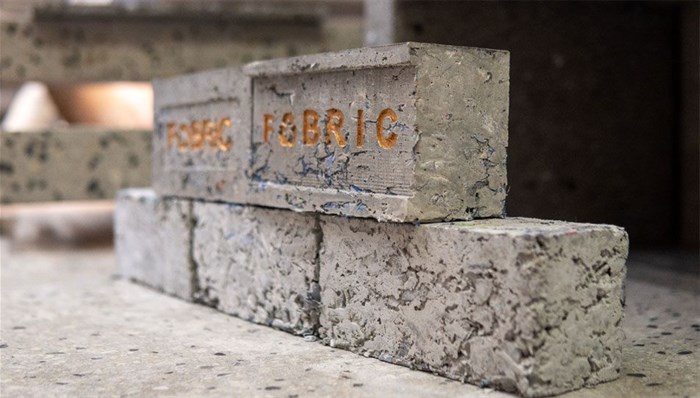
These are also the questions that are important to South Africa’s leading value retailer, Ackermans.
This June, Ackermans is proud to announce it has formalised a partnership with Wastecrete, an affiliation of the World of Decorative Concrete (WoDC) and a business specialising in using waste in different concrete applications which was founded by Johan Coetzee and Schalk La Grange in 2021, to convert fabric waste from the production process and used and damaged garments that are not fit for wear into a first: fabric bricks called F∆BRIC.
Sanette van Huyssteen, product technology manager at Ackermans, says the retail giant is on a journey to reduce waste as much as possible, and explore means to incorporate a circular economy approach in production and long thereafter. “As we look to the future, we are investigating ways to preserve the planet for future generations. Working with our product development team, we have explored various avenues to minimise waste, seek out recycling options and find a way to try to reduce the business’s carbon footprint. This hard work has brought us to Johan and Schalk at WoDC and Wastecrete.”
Wastecrete is recycling textile waste into carbon-neutral building blocks suitable for building construction thanks to its innovative production process.

As the first retail company to partner with Wastecrete, Ackermans is excited to pave the way for other retailers in creating something that can be used again instead of adding to a landfill.
La Grange says the production of the F∆BRIC building blocks and other innovative processes will see textile waste converted into items such as ‘concrete’ tabletops and even paving. “We are only at the start of this exciting journey, it is presenting endless opportunities that will ultimately benefit the man on the street. We realise it comes down to ‘supply and demand’ but we need to educate the consumer with regards to what is possible, and what is now going to be accessible to them in South Africa.”
The fabric waste is supplied to Wastecrete where it is then converted from waste into fabric strips and offcuts. The team can recycle buttons, zips and other trimmings to ensure everything is used. During the production process, the fabric strips and offcuts are mixed with concrete to create a fire retardant and water-resistant brick giving the fabric a whole new lifecycle for the next 100 years.
Van Huyssteen continues, “This is an exciting journey and we urge other fashion retailers to join us and see their fabric waste being converted into something with a new life.”
Ackermans relationship with Wastecrete was officially announced at Decorex in Cape Town in June 2022 where visitors were able to see the production process and gain an understanding of how fabric waste can be transformed.
To see the production process and for more information on Wastecrete, visit World of Decorative Concrete’s site.